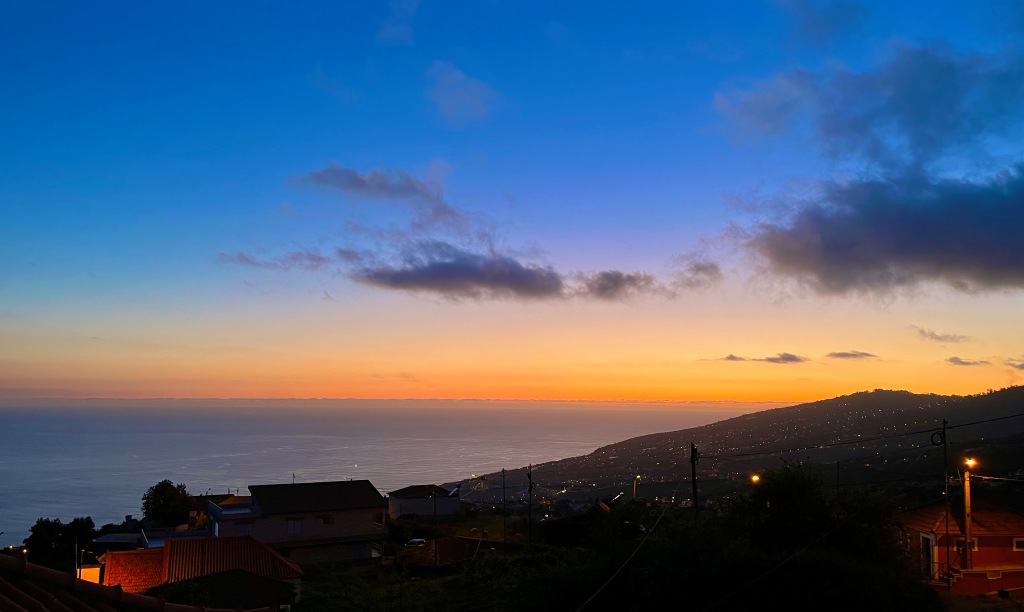Song of the portuguese – Part III: Madeira Island – Southern Shore, Some Mountains, Final Days
Our final few days started after we dropped off Sam at the Madeira airport and went to hike a bit of the Ponta de São Lourenço peninsula.
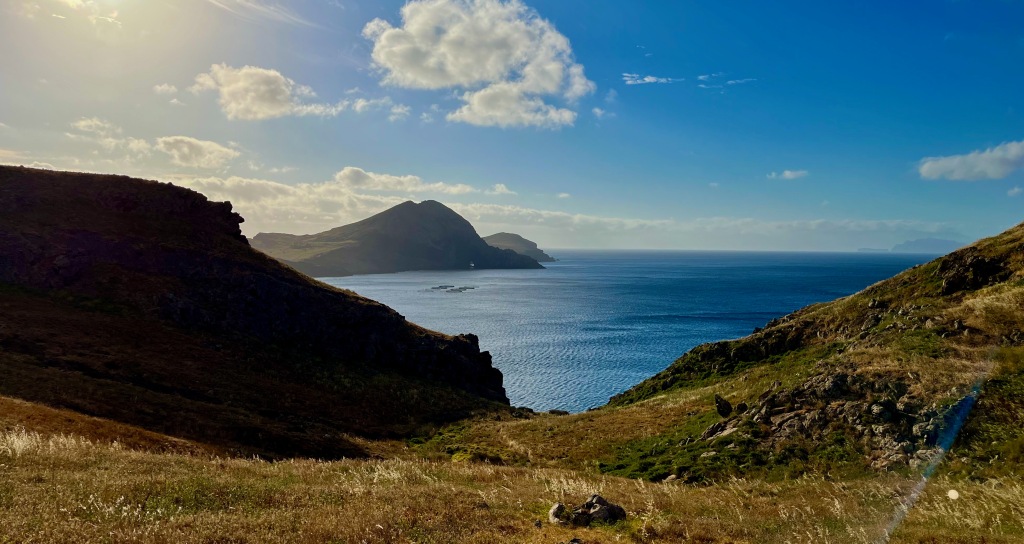
Driving between Ponta de São Lourenço and the airport requires you to drive beneath the airport runway. This is true engineering badassery. Mary caught this shot through our car’s windshield as the motorway took us beneath the stilts that hold up the runway’s extension. The Cristiano Ronaldo International Airport is regarded as the ninth most dangerous airport in the world, and the third most dangerous in Europe.
Because of high mountains on one side and the Atlantic on the other, this airport is difficult for landing commercial jets, and pilots must take special training. On approach planes have to sharply circle the airport to make a visual landing. In the year 2000 the runways were extended, supported by this insane network of reinforced concrete stilts. This airport can now accept full sized commercial jets.
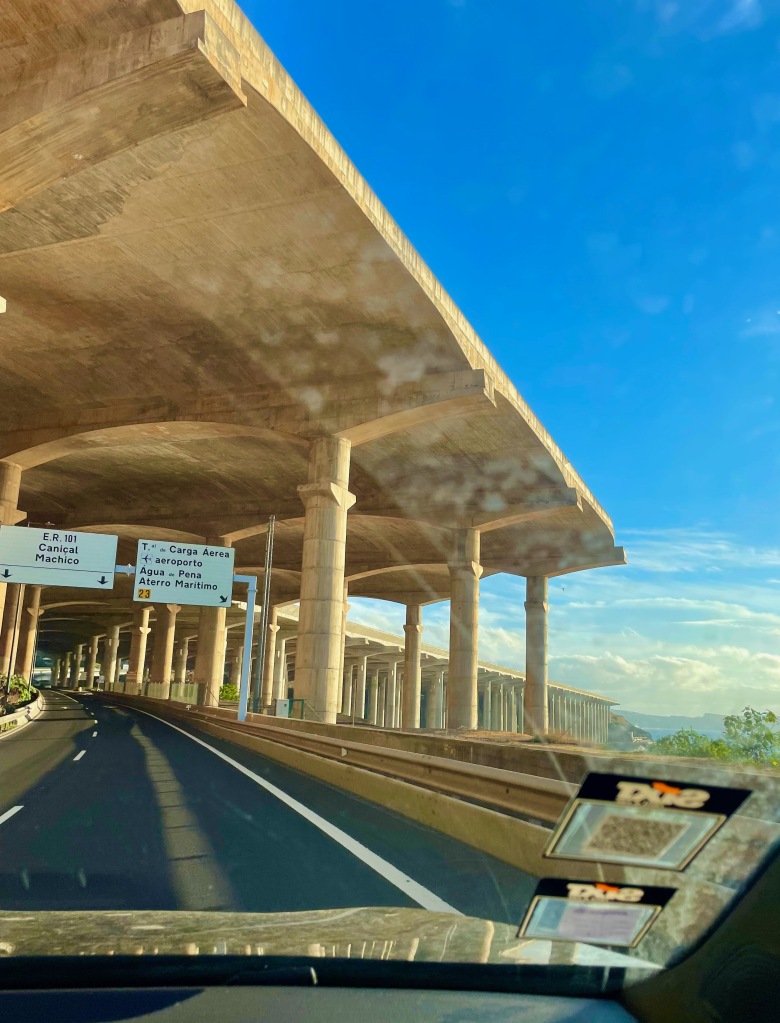
Badass infrastructure continues. Below is a shot showing how the motorways of Madeira tunnel their way through the mountains.
Modern engineering has transformed the lives of Madeirans from one end of the island to other. Not only was the airport revolutionized, the entire motorway system across the island was essentially rebuilt from scratch over two decades ago. Now more than 150 tunnels honeycomb the igneous rock mountains of Madeira. It used to take a bus 8 hours to travel from end of this small island to the other because of all the steep, winding roads. Now on a four lane modern motorway it takes an hour.
Mary and I learned this difference firsthand. We took the scenic route from the capitol city Funchalo to our VRBO in Calheta. The older roads wind up and down the sides of mountains, along cliffs, and constantly braid themselves into hairpin turns.
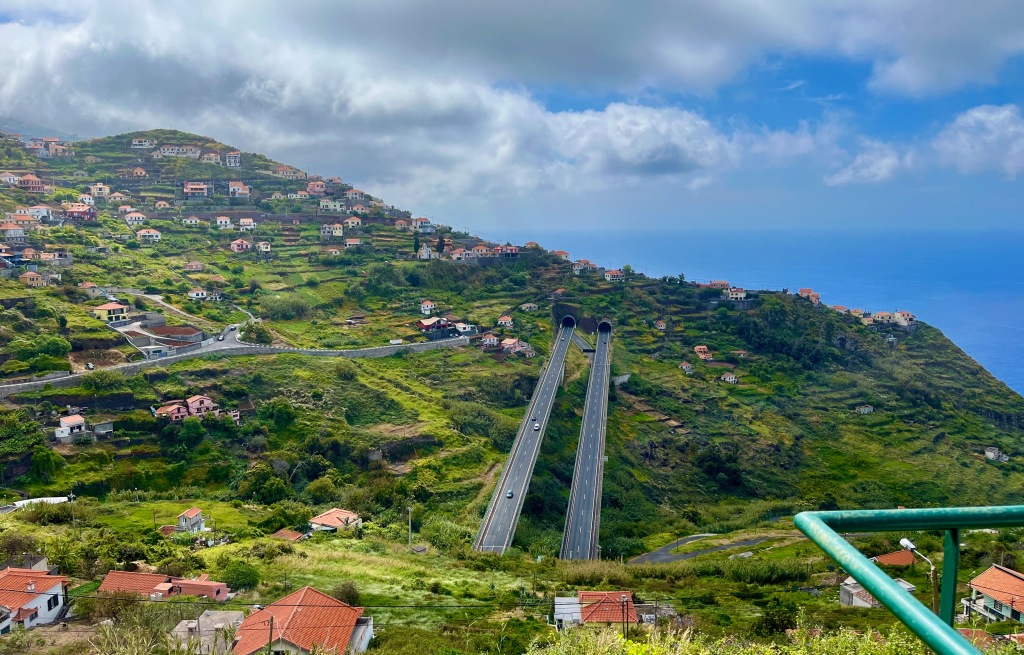
A shot inside one of the tunnels. Many of these are more than a kilometer long.

Madeirans live on the vertical. Here’s a shot of the downtown region of Camara De Lobos, where we stopped to visit a winery. The construction–from municipal buildings and hospitals–follow the contours of land.
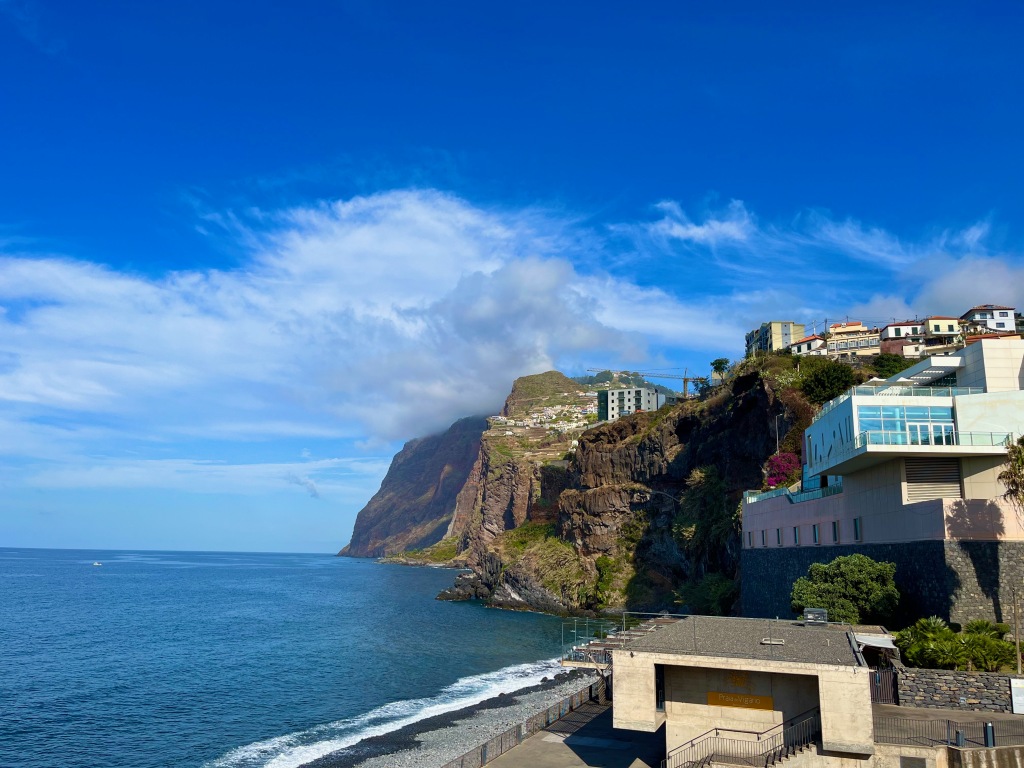
A visit to Madeira would not be complete without a stop at one of their wineries. Here’s Yours Truly at the Henriques & Henriques Winery in Camara De Lobos.
What is Madeira wine? Madeira wines are fortified wines that have distilled spirits or brandy incorporated into them to give them an extra kick. Don’t let that fool you–these wines go down smooth. They range from dry to sweet. I recommend Madeira wines without reservation! The winemakers here have been making the Madeiran varietal since the late 1400’s.
Why did Madeiran wine become fortified? Because in Portugal’s “Age of Discovery” (i.e. slave trade), most Portuguese ships stopped at Madeira on the way to or from Africa…to pick up wine. The winemakers began to instill their wine with grape spirits to enable to it last longer at sea without spoiling.
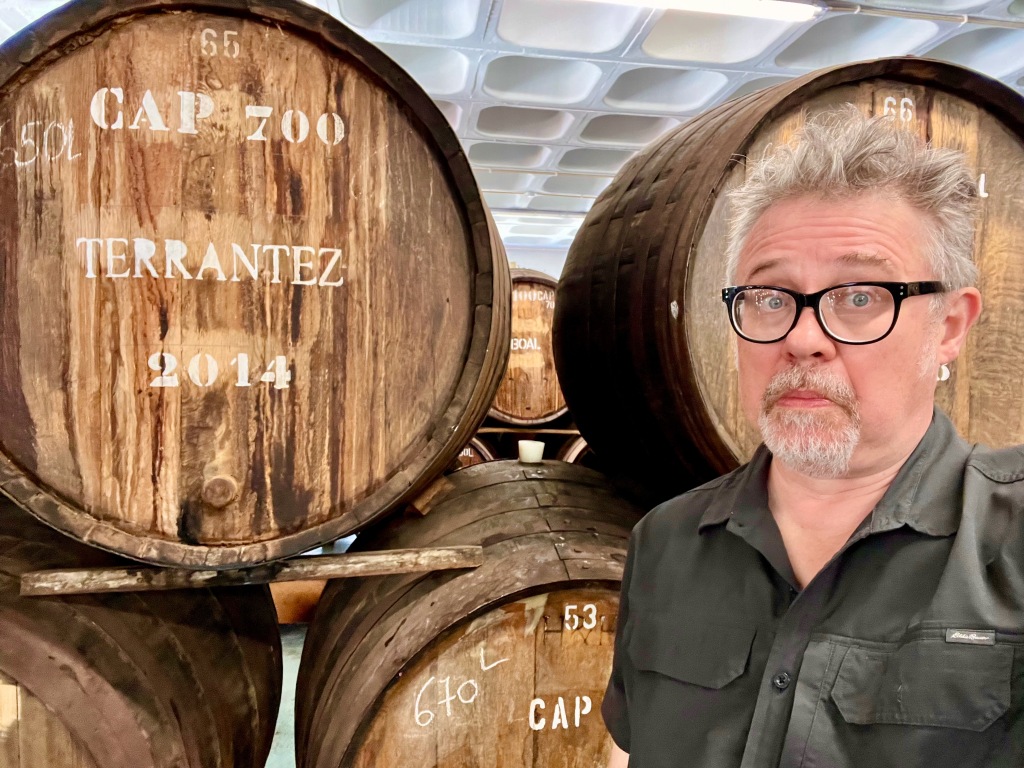
A example of how the secondary roads follow the contours of the hills and mountains. They don’t have aluminum guardrails like in the United States; typically the guardrails are fashioned of stone or concrete and usually decorated. The Madeirans care about aesthetics.
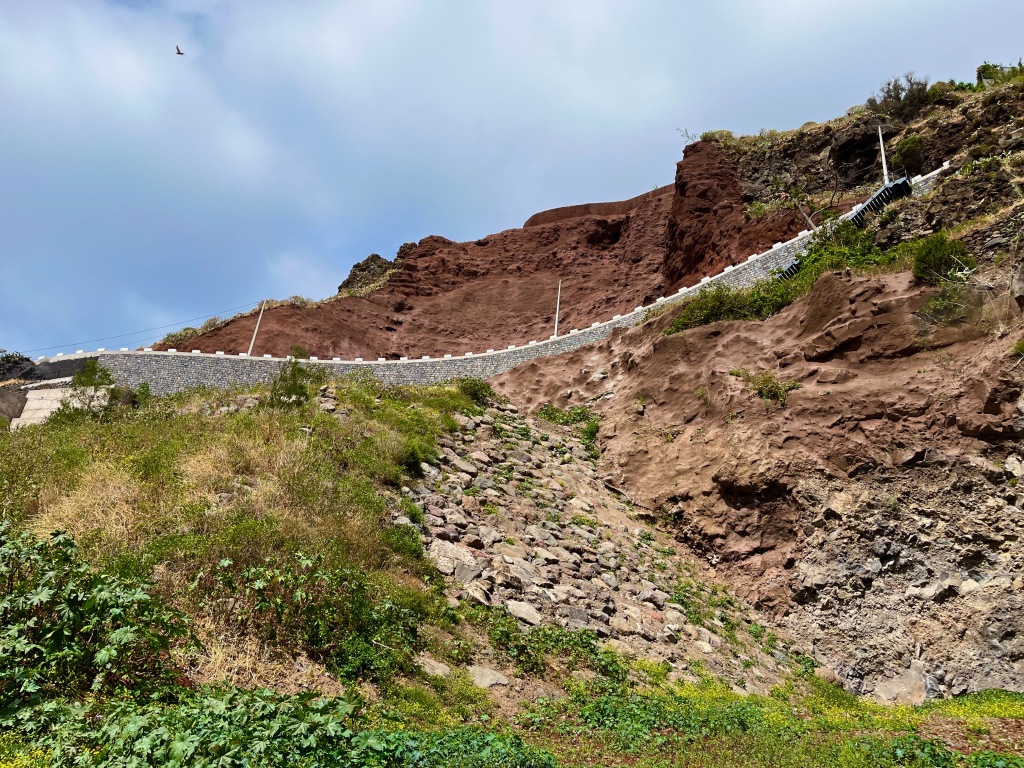
Another example of how these roads wind around the mountains. Mary and I found driving to be very stressful. Behind the wheel you must be 100% on your game and focused. There is no such thing as “buzzed” driving here. One lapse in concentration and you could find yourself sailing over a mountainside.
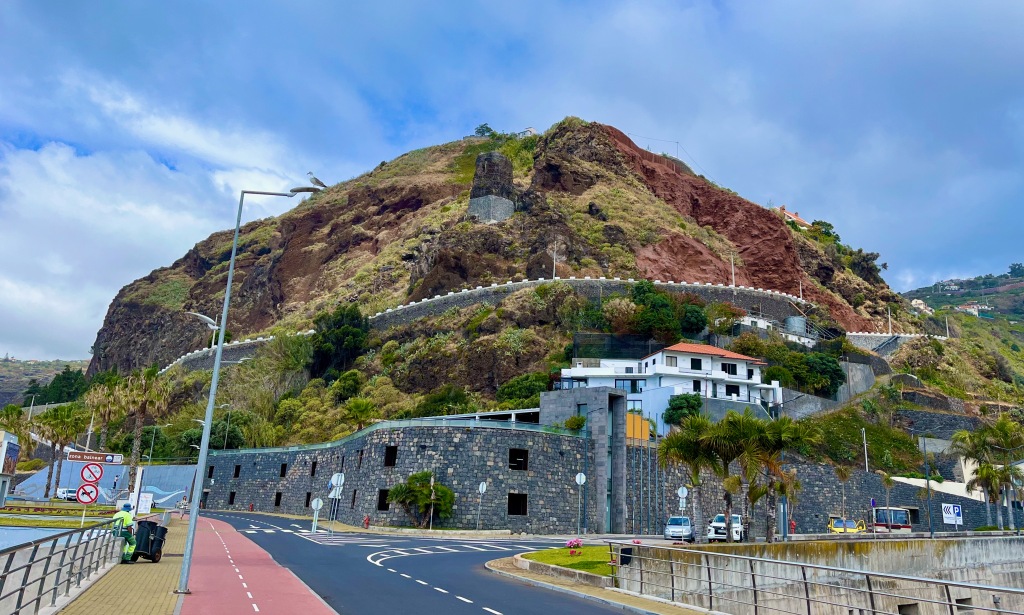
The beautiful town of Ribeira Brava. Many of the towns along the southern coast have their downtown regions nestled into valleys that open to the sea. Home and residential neighborhoods are typically above on the surrounding hills. And to get up those hills? You guessed it, you drive up those winding roads.
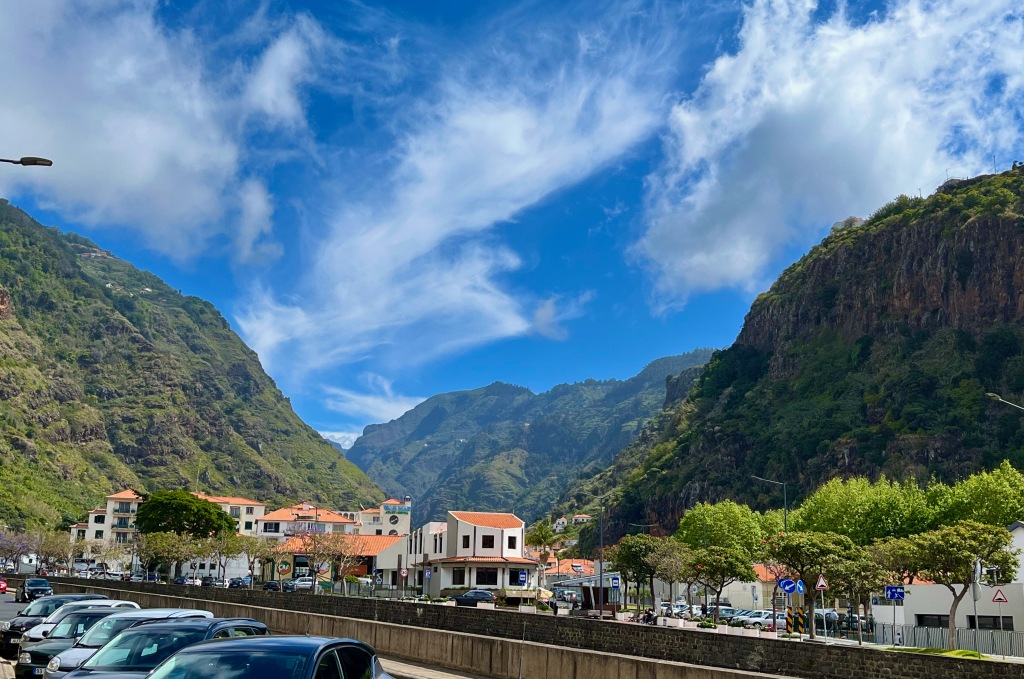
One of the roads near our VRBO in Arco da Calheta.
When we first arrived, we tried finding our lodging with Google. Google took us down a path just like this one, where we thought our rental car was going to teeter off the edge when the road narrowed. We barely got out.
Finally we called the owners. They were more than happy to come find us and guide us. Like every Portuguese citizen we met, they were lovely and generous to us foolish Americans.
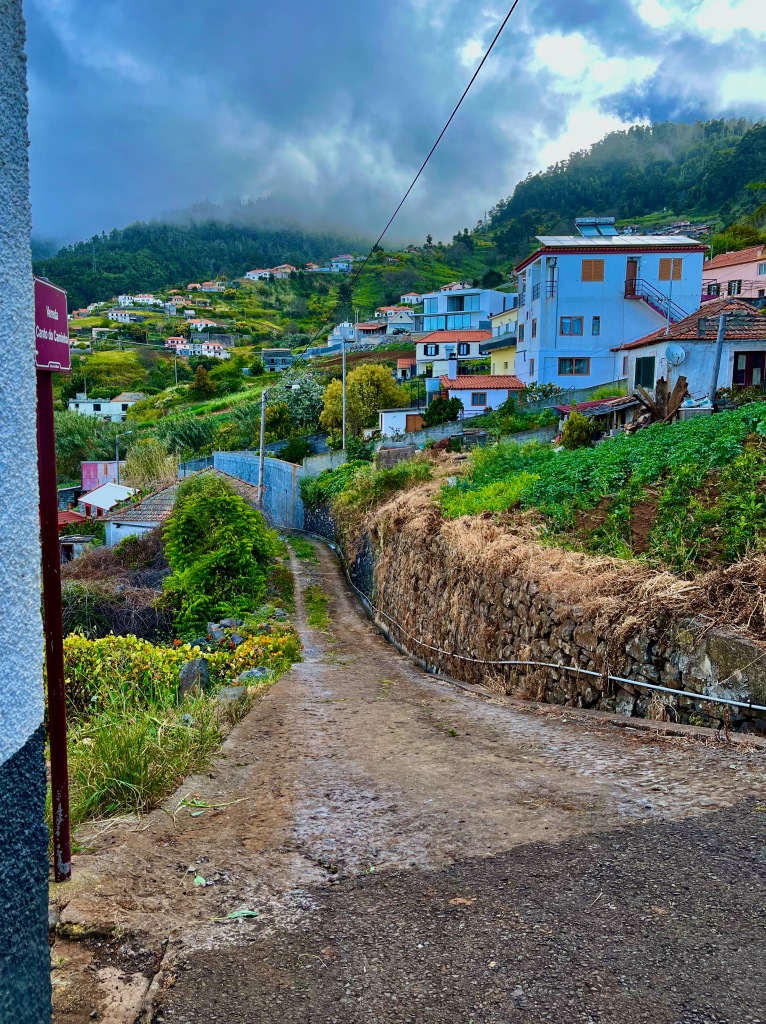
One of the ruins in our neighborhood in Arco da Calheta. Many of the settlements around Madeira stretch back almost four centuries.
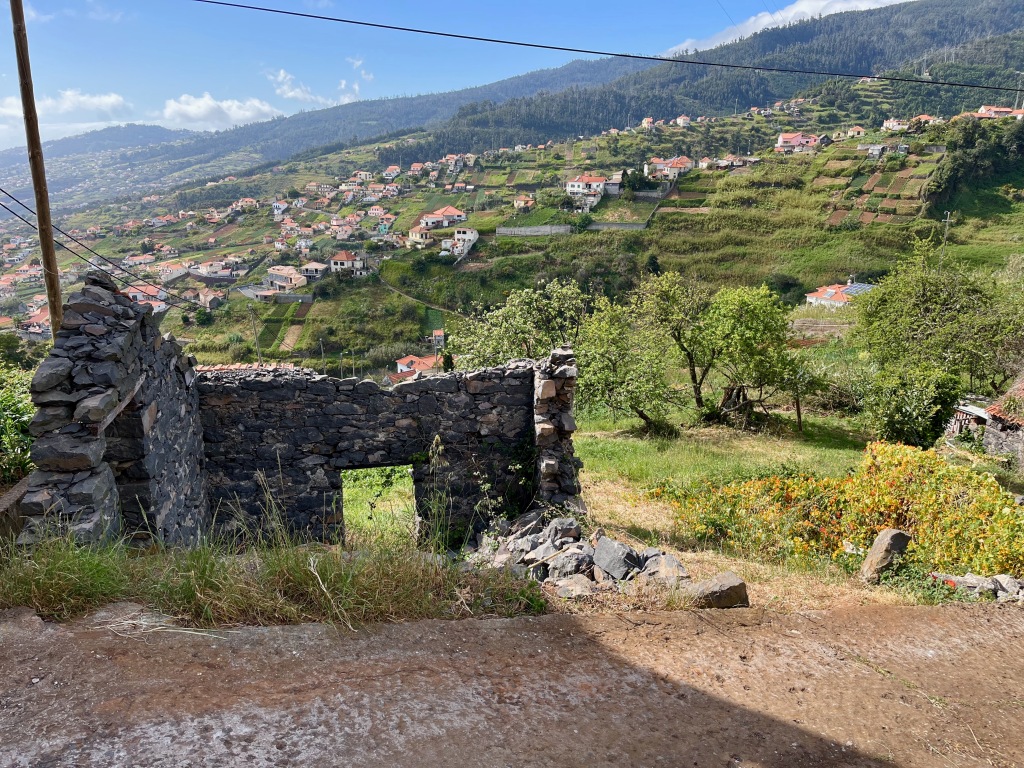
The walkway up to our VRBO.
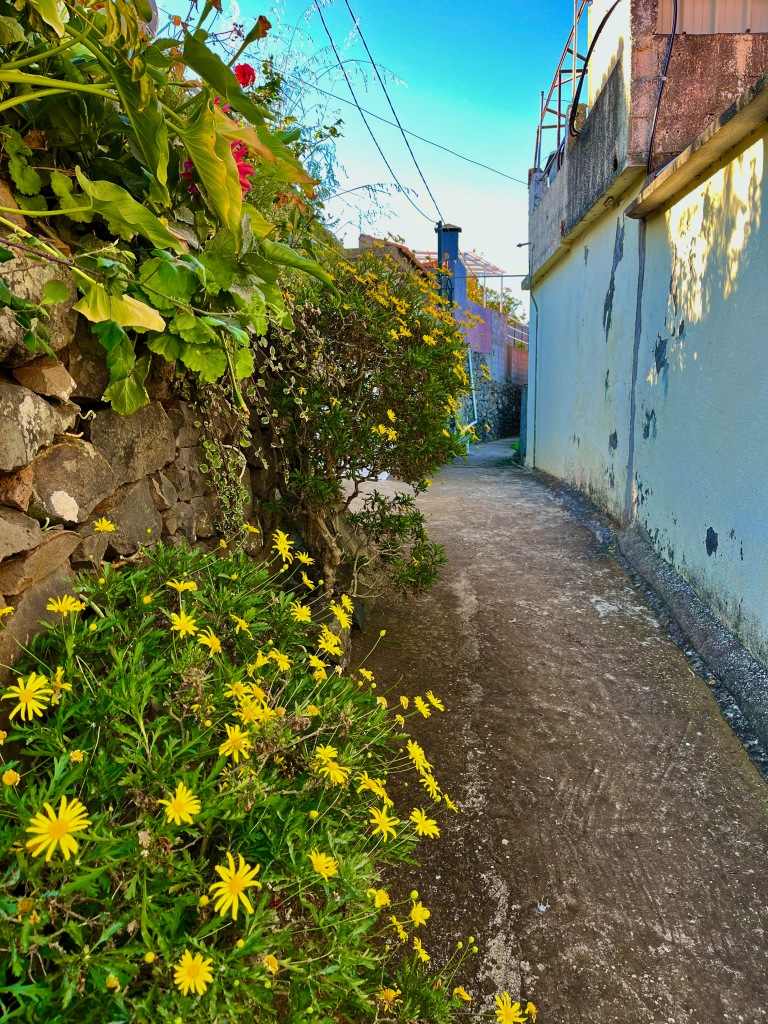
The view from our walkway in the other direction. Flowers bloomed everywhere in this seaside climate.
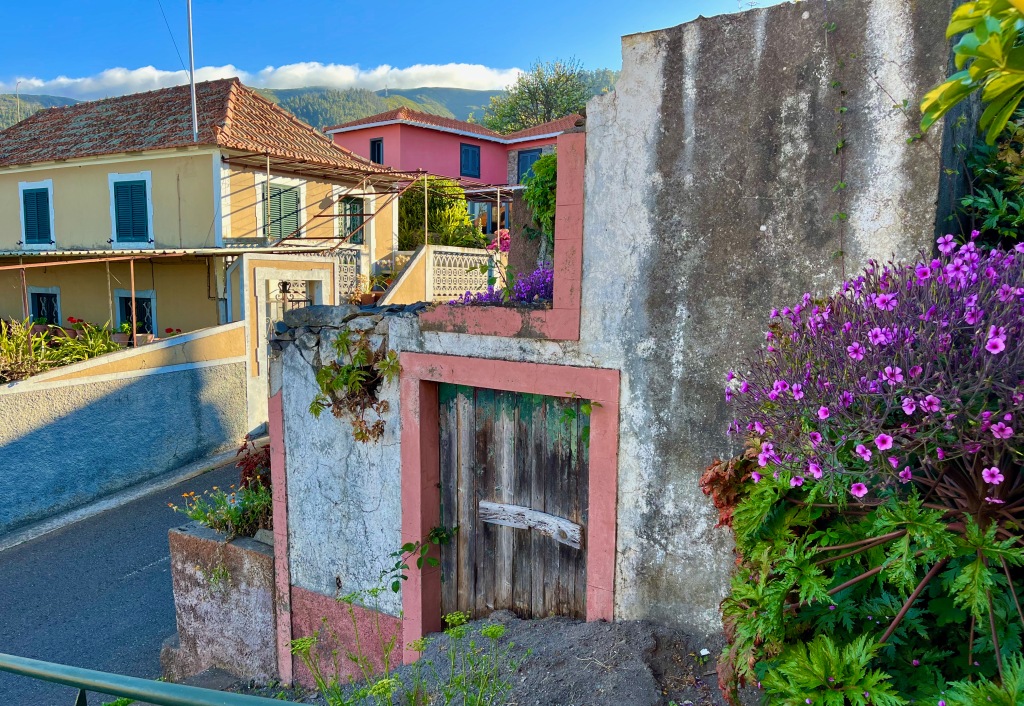
The Atlantic from our porch in Arco da Calheta.
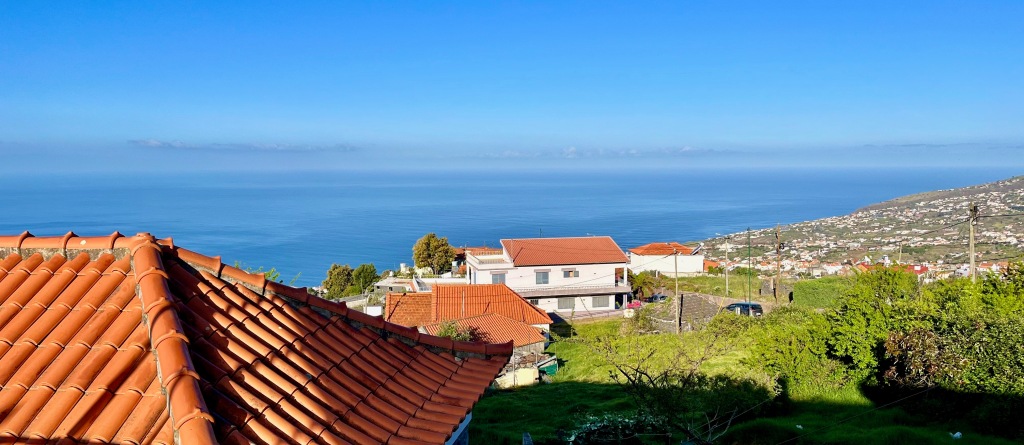
The island of Madeira doesn’t have a lot of traditional sand beaches. Here’s an example of one–the dark igneous rock of Ribeira Brava.
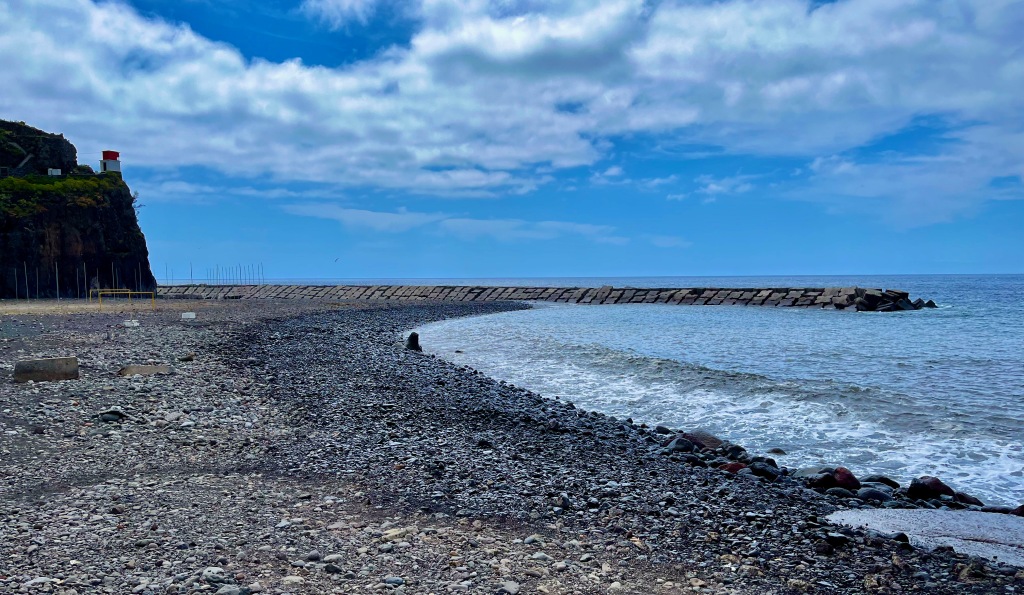
We were staying in “Arco da Calheta” which is one of the neighborhoods of the town of Calheta. It was a short drive down each day to downtown Calheta, which is on the ocean. The first day that drive took us maybe 15 minutes. By the last day we could do it in 10 minutes because we had finally gotten used to the twists and turns of the road. As you can see from this shot, areas along the shoreline in Calheta are quite gorgeous.
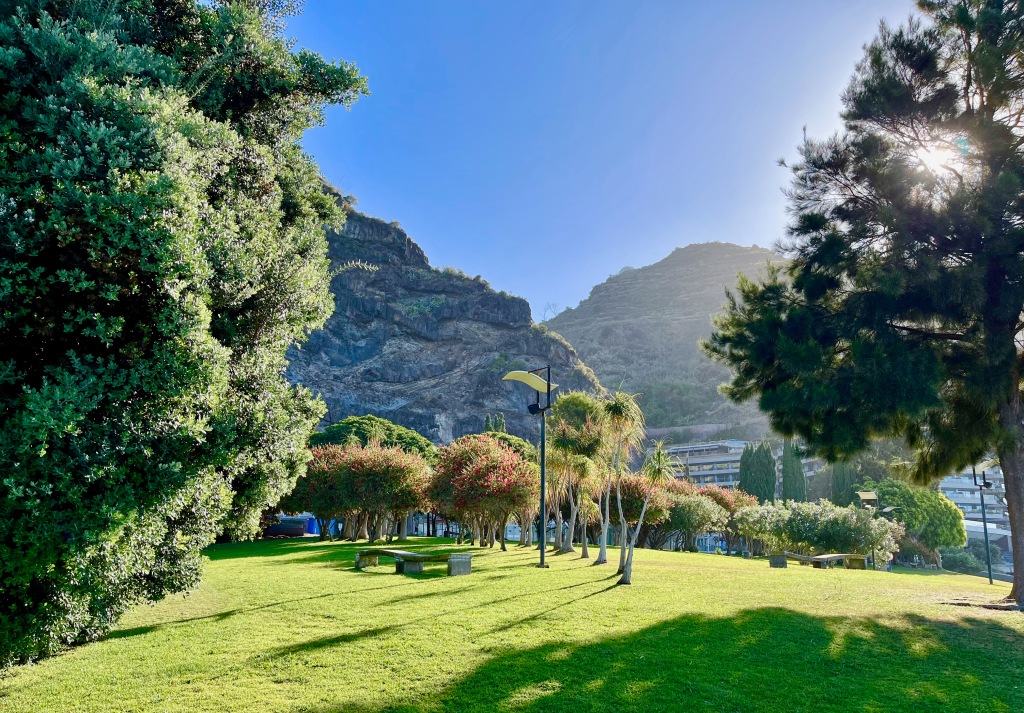
A mural at Calheta marina.
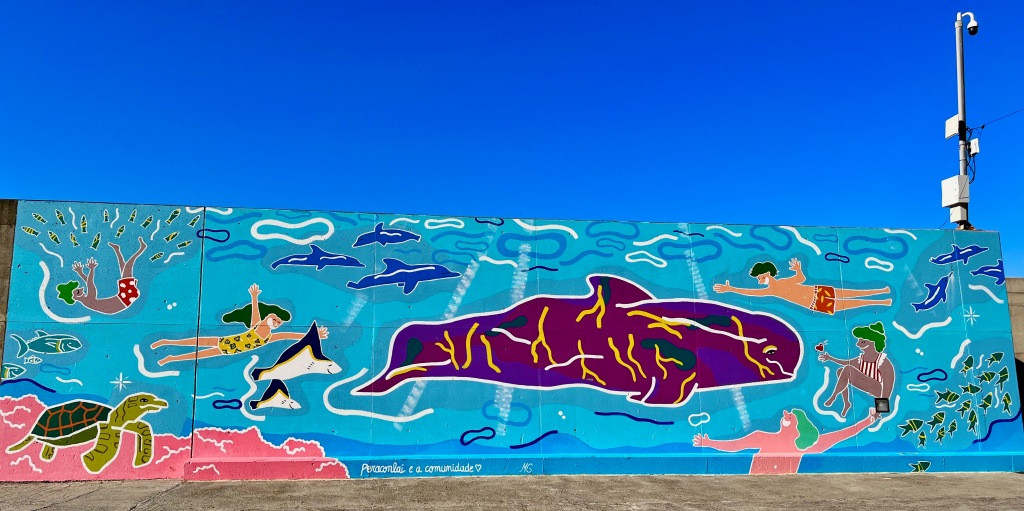
Relaxing at the beach at Calheta. Calheta has the largest sand beach on Madeira. Seawalls were built in the shape of two horseshoes and then sand was imported. It works and it’s very nice.
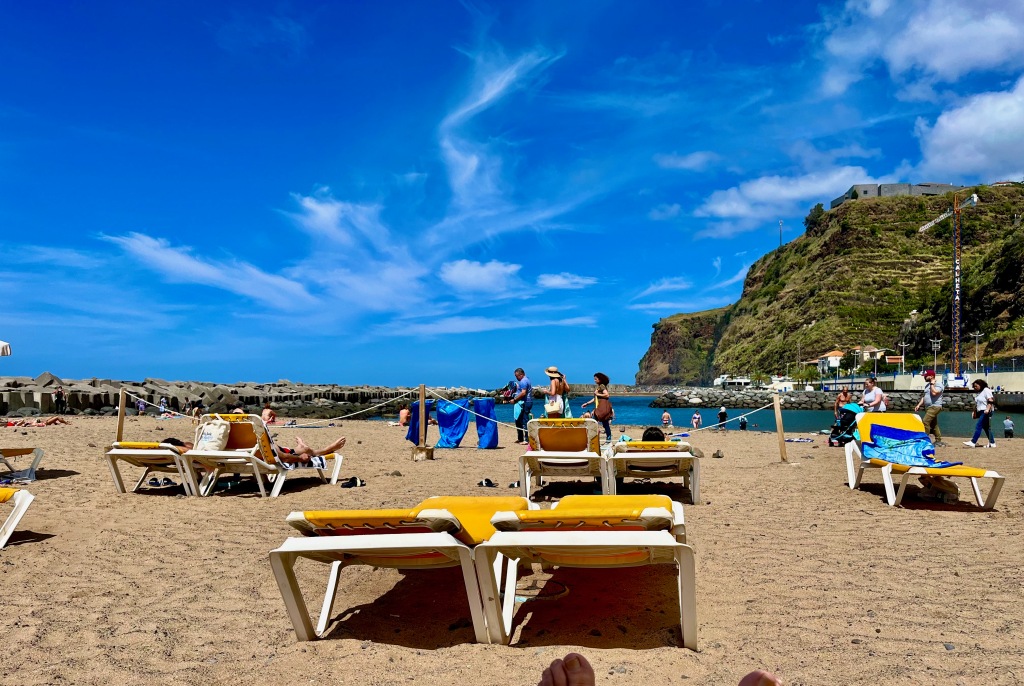
An example of a typical Madeira Island salad. Typically it comes with a meat, in this case grilled shrimp and crab. Lettuce, tomatoes, cucumbers, white onion, often slices of fruit. By and large the Portuguese don’t understand the American concept of salad dressings. It’s vinaigrette and olive oil. With the freshness of the ingredients, simple dressing like that which works just fine!
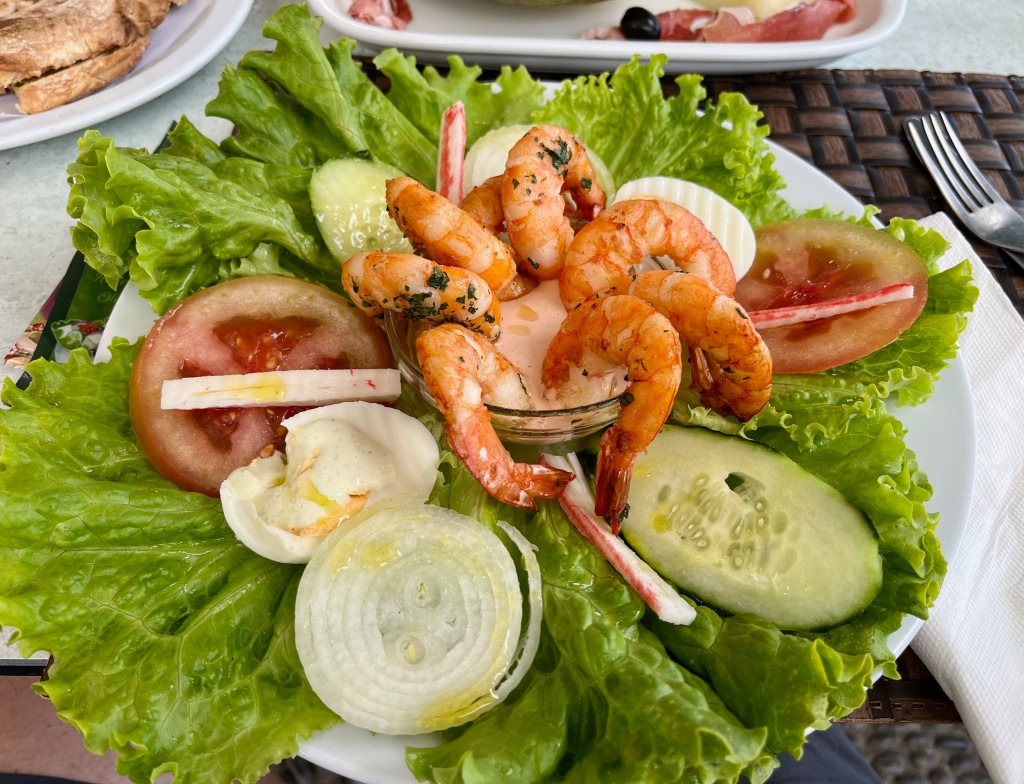
One one of our days Mary and I took a field trip into the mountains of Madeira near Rabaçal. This is looking down the southern side of the island toward the ocean, at about 4500 feet above sea level.
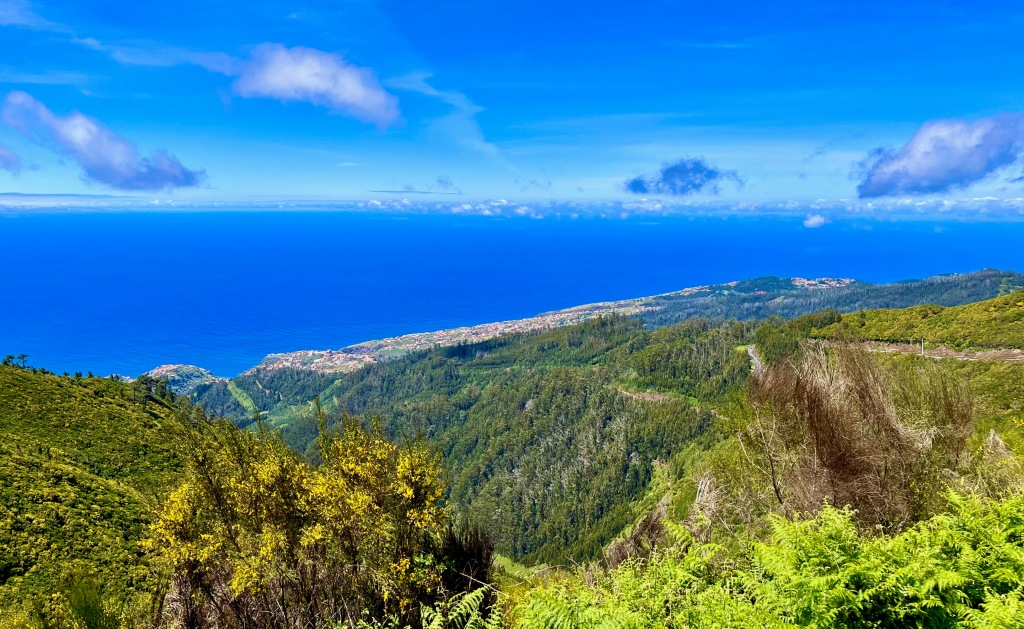
We hiked some of levadas of Rabaçal, just like we did several days ago with Sam near Funchal. The levadas stretch the length of Madeira from east to west, in a network designed to funnel rainwater and runoff from the mountains and from the northern rainy slopes to the sunny southside of the island. Again, as mentioned in my previous blog, these systems of levadas were constructed centuries ago by sugarcane plantation owners…with slave labor. The levadas are still functioning today.
Here’s Mary hiking along a levada near Rabaçal.
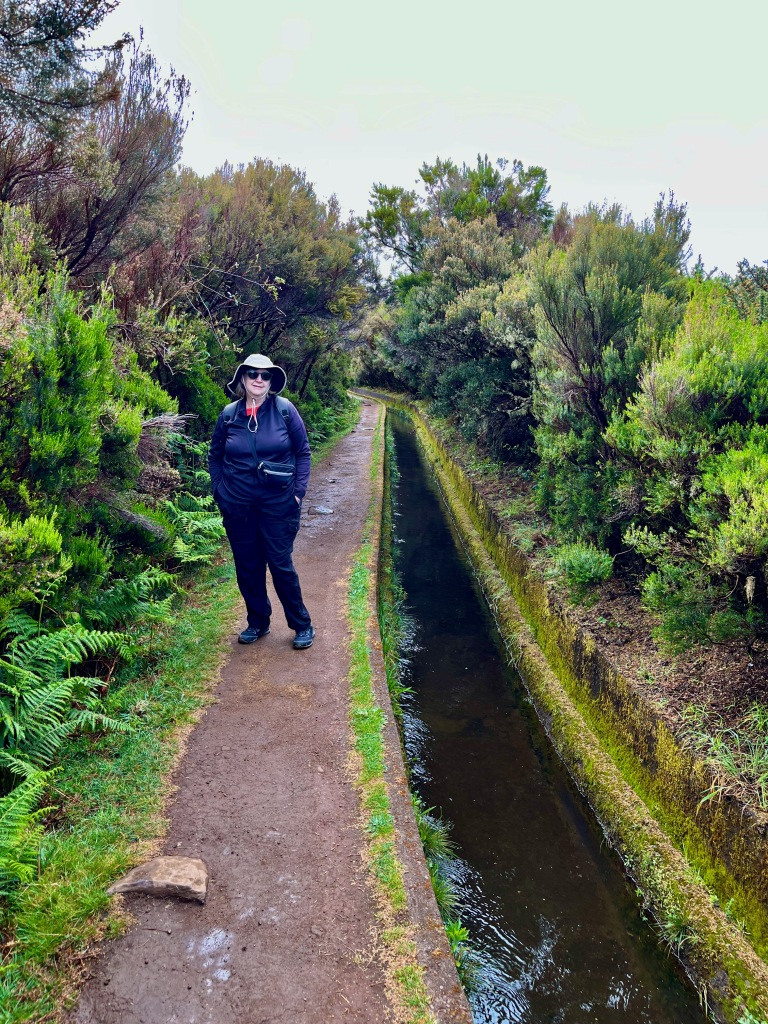
A view of the hills near Rabaçal. See the horizontal dark lines scoring the foliage along the mountain side? These are the levadas. They are canted ever-so-slightly downhill to funnel water down the mountainsides.
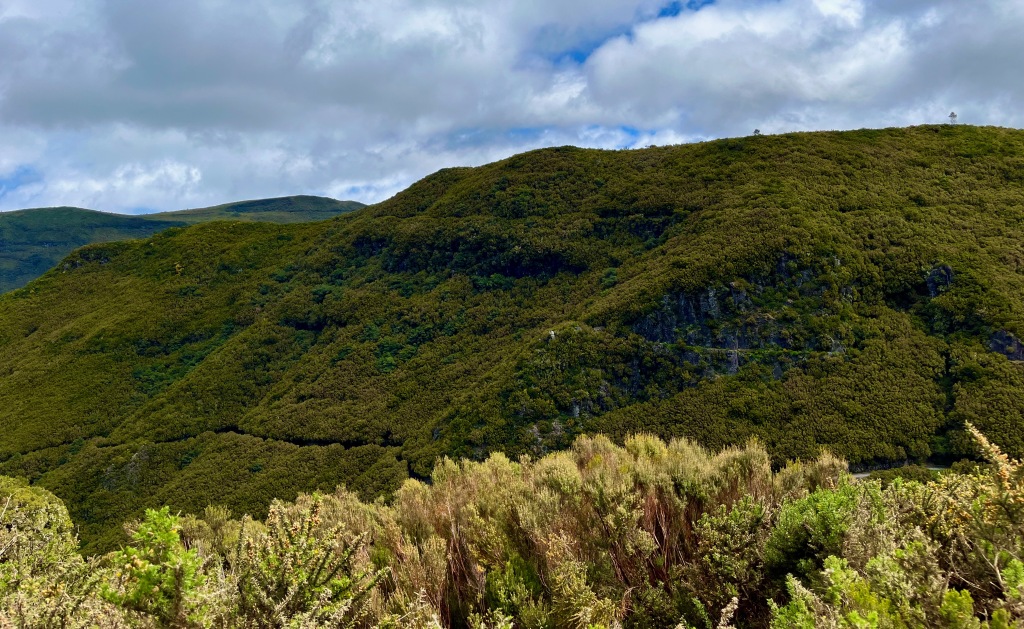
On our way to Rabaçal we encountered some cattle. Here’s a calf saying hello. Cattle graze up in the mountains and the Portuguese don’t believe in fences like Americans seem to. Yes, when hiking the levadas in this region you have to watch your step!
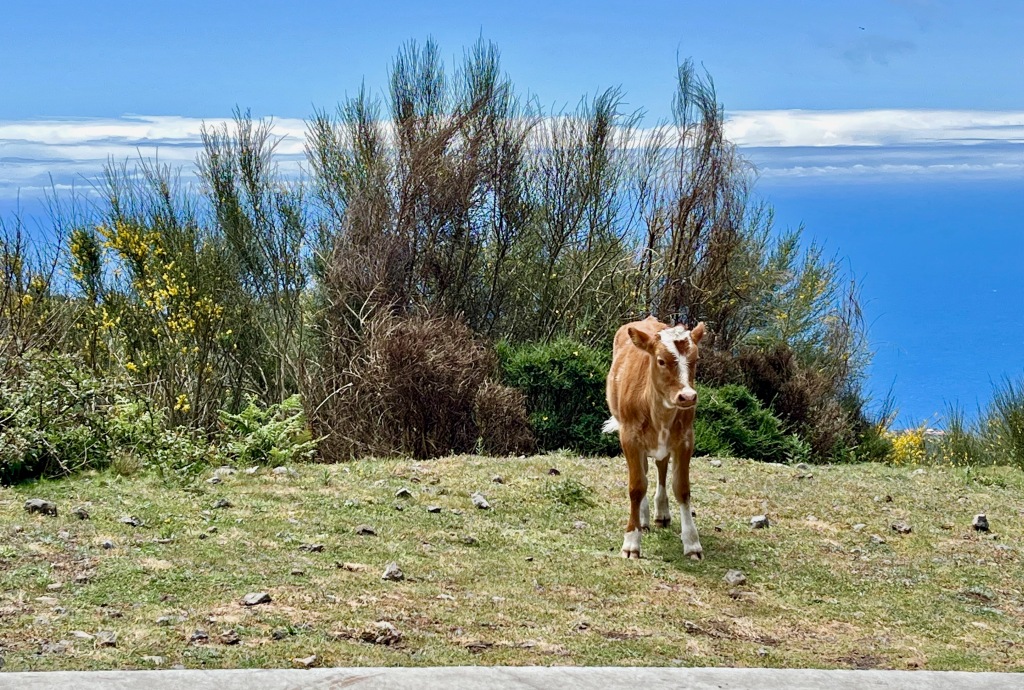
Back at our VRBO, big clouds moved in over the ocean. It was difficult to predict the weather. On this oceanic island the weather changes rapidly and blows through in small cells. It can be raining in one neighborhood, dry in the next one.
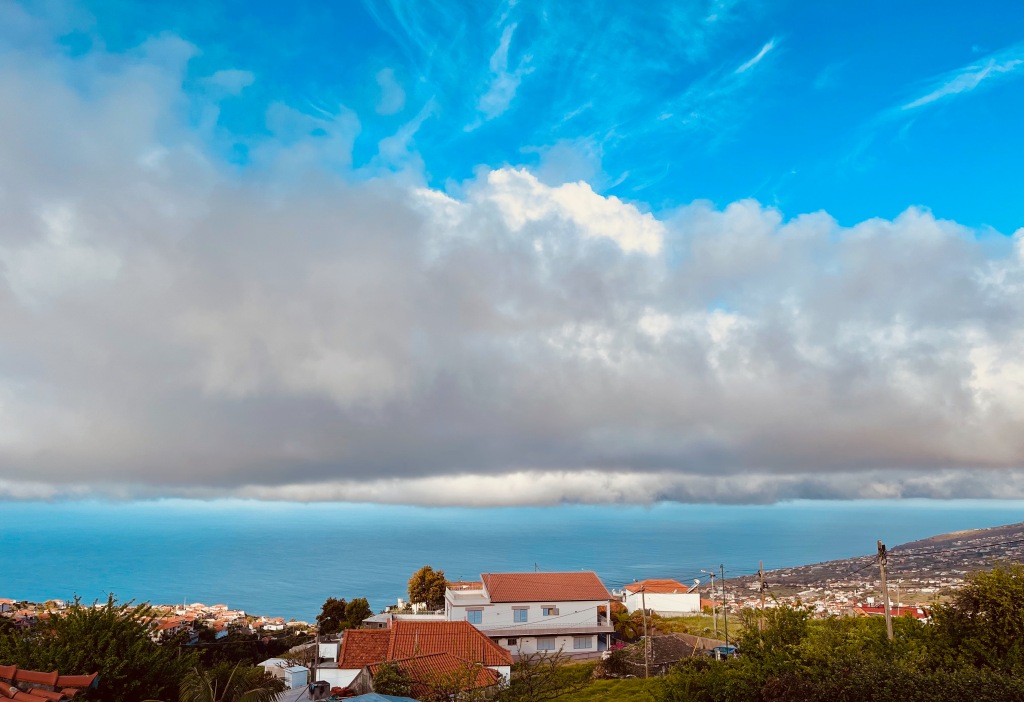
After a rainstorm, the surface of the sea was glowing late in the day.
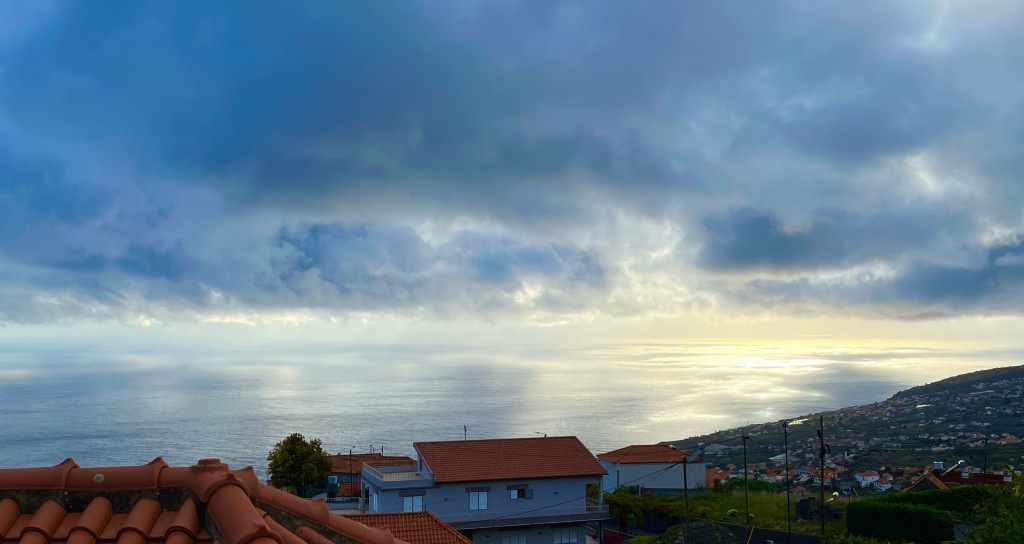
Sunset from our lodging in Arco da Calheta.
Farewell Madeira!
